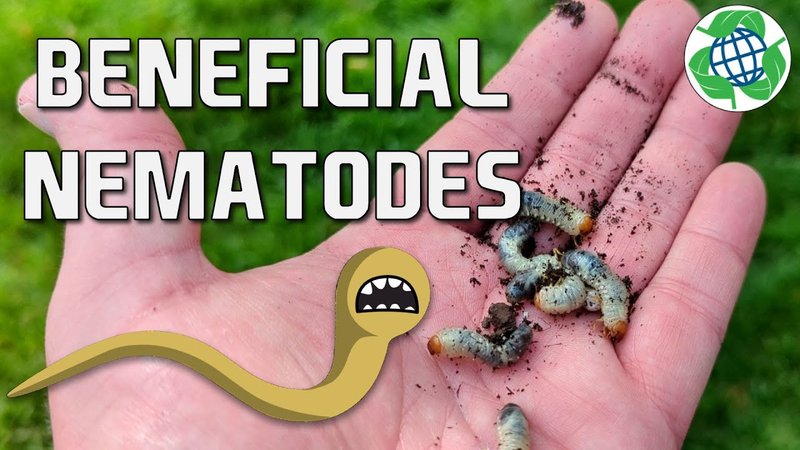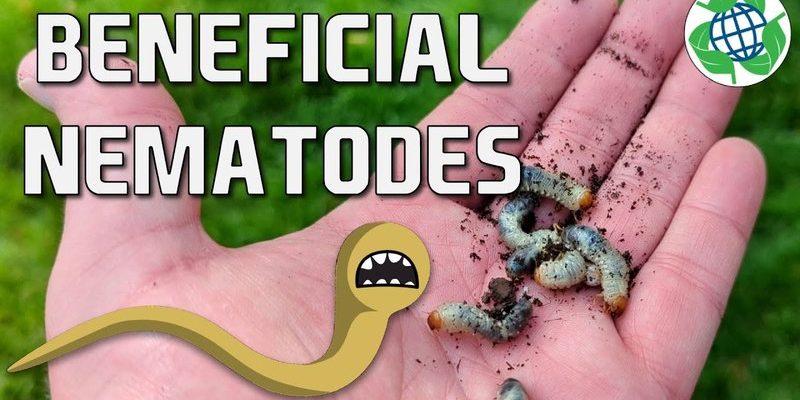
In gardening, it’s often a balancing act of encouraging good organisms while keeping the bad ones at bay. Hammerhead worms, known for their distinctive hammer-shaped heads, are not just a nuisance; they can also be harmful to other beneficial soil organisms. That’s where beneficial nematodes come into play. Let me break down how these little allies can help you regain control of your garden.
Understanding Hammerhead Worms
Hammerhead worms, scientifically known as *Bipalium kewense*, are native to tropical regions but have spread to various parts of the world. Measuring up to 12 inches in length, these flatworms are identifiable by their unique head shape that resembles a hammer. They thrive in moist environments, often found in compost piles, mulch, or near water sources.
What makes these worms particularly concerning is their diet. They primarily feast on earthworms and other beneficial soil organisms, harming the soil structure and fertility. Hammerhead worms can disrupt your garden’s ecosystem, leading to poor plant growth and yield. Recognizing and addressing their presence is crucial, and that’s where beneficial nematodes come into play.
What Are Beneficial Nematodes?
Beneficial nematodes are microscopic roundworms that exist naturally in soils around the world. They’re like the friendly neighbors of the soil, preying on pest insects and keeping the bad guys in check. These nematodes typically measure between 0.3 and 1 mm in length and are not harmful to humans, pets, or plants.
You might be wondering how these tiny creatures can help with hammerhead worms. Well, beneficial nematodes seek out pests in the soil, especially those that are soft-bodied and vulnerable. When they find a suitable host, they enter the pest’s body through natural openings, releasing bacteria that ultimately kill the pest. This process not only eliminates harmful pests but also enriches the soil, thanks to the decomposition of the dead pest bodies.
How Do Beneficial Nematodes Suppress Hammerhead Worms?
So, how exactly do beneficial nematodes target hammerhead worms? The key lies in their lifecycle. Once you introduce nematodes into your garden, they begin to search for food. Hammerhead worms, being soft-bodied, are easy targets.
When a beneficial nematode finds a hammerhead worm, it enters its body and releases bacteria. This bacteria then multiplies, causing the nematode’s host to succumb to the infection. The nematodes continue their life cycle, reproducing within the dead worm and seeking out new pests. This creates a self-perpetuating cycle of pest control.
Here’s a quick summary of the benefits:
- Continual pest control without harmful chemicals.
- Safe for beneficial organisms like earthworms.
- Promotes a healthier ecosystem in your garden.
In effect, using beneficial nematodes is like setting an army of tiny agents to do the dirty work for you.
Applying Beneficial Nematodes in Your Garden
Applying beneficial nematodes is relatively straightforward, but timing and technique are crucial. Most often, nematodes are sold in a dormant state and need to be mixed with water before application. You can find them in various places, including garden centers or online.
Here’s a simple step-by-step guide to applying nematodes:
- Choose a cool, moist day: This helps the nematodes remain active during application.
- Mix the nematodes with water: Use the recommended amount specified on the packaging.
- Apply to the affected areas: Use a garden sprayer or watering can to ensure even distribution in moist soil.
- Keep the soil moist: Water the area lightly after application to help the nematodes settle in.
Following these steps will increase the likelihood that your beneficial nematodes thrive and effectively suppress hammerhead worms in your garden.
Monitoring and Maintenance After Application
Once you’ve applied the nematodes, it’s important to monitor your garden for results. Depending on the level of hammerhead worm infestation, it may take some time to see substantial changes. Many gardeners suggest waiting about two to three weeks to assess the situation.
While beneficial nematodes are effective, they thrive in moist conditions. Therefore, maintaining proper moisture levels is crucial for their success. If you notice signs of hammerhead worms still lurking after a few weeks, consider reapplying the nematodes or combining treatments with other pest management strategies.
Here are some tips for ongoing monitoring:
- Check for signs of hammerhead worms regularly.
- Observe the soil moisture; avoid letting it dry out completely.
- Consider rotating nematode species if one type seems less effective.
By keeping a close eye on your garden, you’ll be able to make necessary adjustments and ensure that the nematodes are doing their job.
Alternative Methods for Hammerhead Worm Control
While beneficial nematodes are great for battling hammerhead worms, they aren’t the only weapon in your gardening arsenal. There are several alternative methods you can consider, especially if the nematodes don’t seem to be enough on their own.
One effective approach is manual removal. While it might sound tedious, picking hammerhead worms by hand and disposing of them is an immediate way to reduce their numbers. Just be sure to wear gloves—these worms can secrete a toxic substance if threatened.
Another alternative is using diatomaceous earth, a natural powder made from fossilized algae. Sprinkling this around your garden can create a barrier that dehydrates and kills small pests, including hammerhead worms. Just remember to reapply after rain, as it loses effectiveness when wet.
Why It Matters: The Impact on Your Garden
Understanding how to manage hammerhead worms with beneficial nematodes is not just about eliminating pests; it’s about nurturing a healthy ecosystem. Hammerhead worms can disrupt your soil and plant health, leading to decreased productivity and compromised plant growth. By using beneficial nematodes, you’re promoting the well-being of your garden while avoiding harsh chemicals that could harm beneficial organisms like pollinators and earthworms.
Healthy soil means healthy plants, and maintaining that balance is crucial for any gardener. As you combat hammerhead worms, remember that you’re also fostering an environment where beneficial organisms can thrive, ultimately leading to a vibrant, flourishing garden.
In sum, using beneficial nematodes to suppress hammerhead worms is an effective and environmentally friendly solution. By understanding how these tiny warriors work, applying them correctly, and adopting additional control methods, you can reclaim your garden space and enjoy a thriving ecosystem. Happy gardening!

